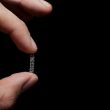Courtesy of Dr. Carlos Fava. Carotid artery stenting (CAS) with a cerebral protection system has emerged as an alternative to surgery, particularly for patients with high surgical risk. Nowadays, there are a considerable number of cerebral protection systems, but these may sometimes fail due to anatomical issues, the diameter of embolized particles, or placement difficulties (among...
Practical Management of Coronary Perforations
Coronary perforation has an incidence of 0.5% and it is associated with a 13-fold increase in in-hospital events and a 5-fold increase in 30-day mortality. This event is so catastrophic that its management has become indispensable knowledge to all interventional cardiologists. This accident is most frequently provoked by artery over-dilation caused by a balloon or...
Debris Captured by SENTINEL Devices Result Different across Different Valves
The idea behind this study is that debris can be captured in all patients during TAVR, even though we still ignore which patients would benefit more from this device. Tissue particles captured by the SENTINEL during TAVR vary from valve to valve, according to this new analysis. There are differences in size and number of...
Direct Stenting vs. Conventional Angioplasty and Their Interaction with Thrombus Aspiration
The rates of direct stenting are higher among patients randomized to thrombus aspiration. The rates of clinical events and myocardial reperfusion did not differ significantly between a direct stenting strategy vs. predilation and stenting, and no interaction was observed as regards thrombus aspiration. Several preliminary studies have emerged from the hypothesis that a direct stenting...
What Happens with Small Dissections and Imperfections Only Shown by OCT?
When we carry out an angioplasty guided by angiography alone, as we historically have, we are almost blind. Nowadays, optical coherence tomography (OCT) offers plenty of detail but also raises costs, procedure time, and contrast volume. The question that this study aimed to answer is whether becoming aware of all small defects and imperfections in...
NSAIDs and Risk of Bleeding in Patients with Atrial Fibrillation
The use of nonsteroidal anti-inflammatory drugs (NSAIDs) is very frequent and many of these medications are sold over-the-counter, but they can expose patients with atrial fibrillation using warfarin or dabigatran to potentially dangerous bleeding. Such a combination is a “perfect storm” of sorts, since atrial fibrillation is the most frequent type of arrhythmia and its...
EuroPCR 2018 | Swedish Registry on the SYNERGY DES: tested in primary PCI for the first time
The study included 36292 consecutive patients undergoing acute myocardial infarction receiving PCI with the new generation stent SYNERGY (thin struts, bioresorbable polymer and everolimus eluting); 39.7% presented ST elevation MI. Kaplan-Meier curves at 2 years of patients receiving the SYNERGY vs patients receiving other drug eluting stents resulted very similar for thrombosis (0,69% vs 0,81%,...
“Ad Hoc” PCI during TAVR: No Impact on Safety or Long Term Outcomes
According to a recent study published in Circulation Cardiovascular Interventions, screening for coronary artery disease (CAD) with an invasive coronary angiography (as part of the protocol prior TAVR) and performing PCI and TAVR in the same session, has no impact on periprocedural safety or on long term outcomes. Study outcomes offer new hope, especially as regards using TAVR...
Should We Begin to Use IVUS in CTO?
Courtesy of Dr. Carlos Fava. Currently, chronic total occlusions (CTO) are one of the obstacles that coronary angioplasties must overcome, particularly with the development of drug-eluting stents (DES) and new devices and strategies for these challenging lesions. However, there is little information on the safety, efficacy, and real clinical benefit of implanting stents of over 60 mm (known as full metal jackets, FMJ)....
In which patients should we attempt chronic total occlusion rechanneling?
Although chronic total occlusion (CTO) is a common finding, there is little consensus as to when such lesions should be treated routinely with angioplasty. Benefits of successful rechanneling include relief of symptoms, resolution of ischemia, improvement in ventricular function, and avoidance of myocardial revascularization surgery. Unsuccessful rechanneling is common and may be associated with several adverse events,...









